This course isn’t supposed to delve into computer basics and therefore won’t tell you how to install TrueCrypt in Windows. However, you may encounter some issues during the installation of TrueCrypt on macOS and Linux, so in this part we are providing you a step-to-step walkthrough.
Installing TrueCrypt on Linux using Linux Mint
Download the version of the program 7.1a.
Unpack it after your download is completed.
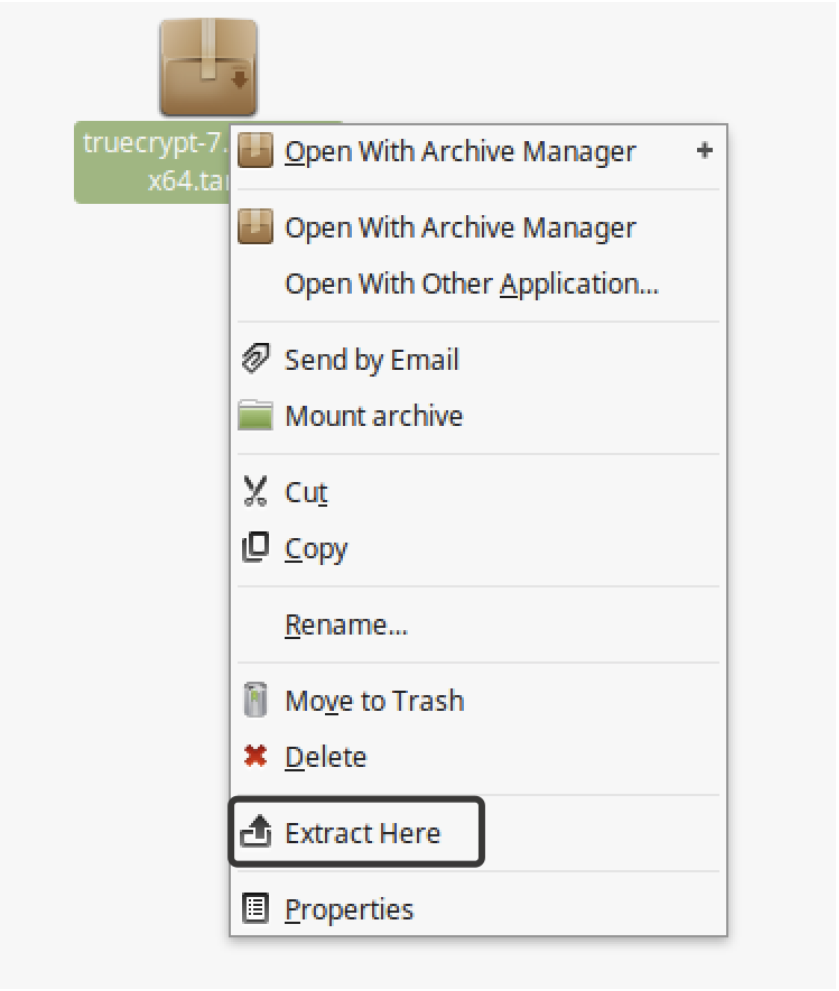
The folder contains the file truecrypt-7.1a-setup-x64. Run it.
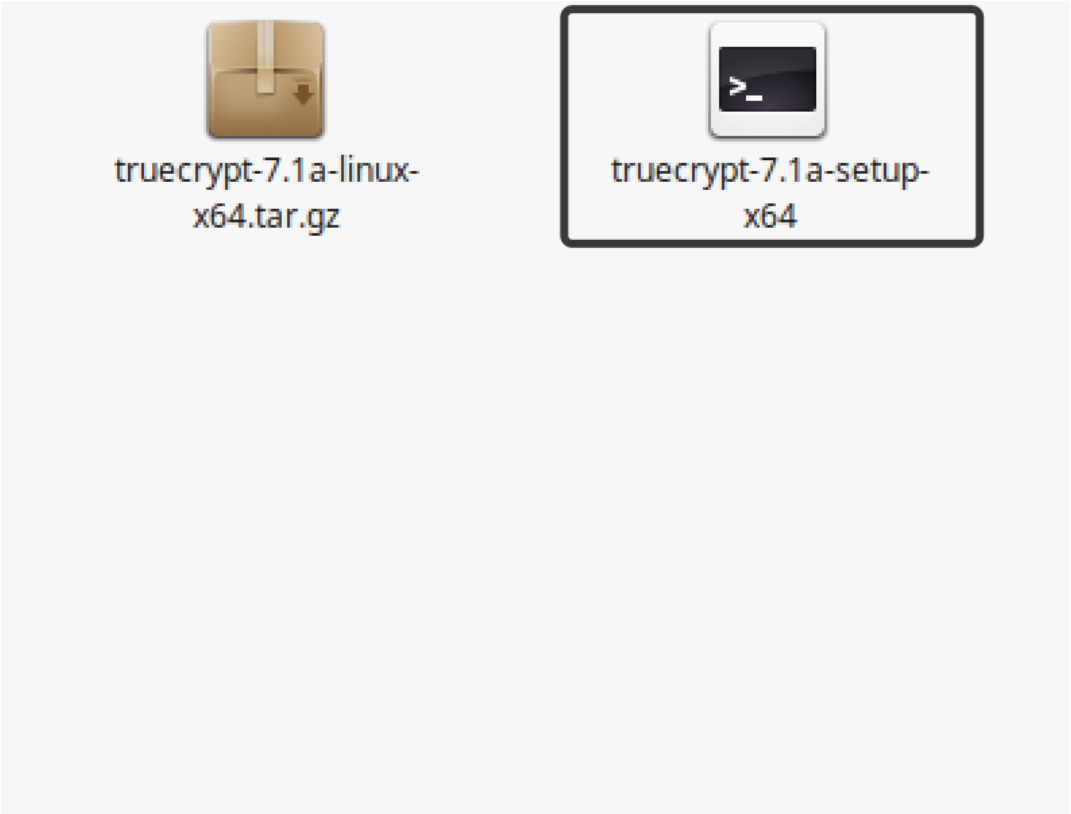
Select "Run in Terminal".
 .
.
In the terminal select Install truecrypt_7.1a_amd64.tar.gz after indicating the number 1. Pressing the down arrow on your keyboard, read through the license agreement and accept it by typing in “yes”. Wait until the installation of the software pack is completed. If after the installation you don’t see TrueCrypt on the list of your programs, reboot the system,
Be aware that the installation of TrueCrypt is unavailable in the live session of Linux Mint.
Installing TrueCrypt on macOS
If you download TrueCrypt and attempt to install it, you are likely to see the following error “TrueCrypt requires Mac OS X 10.4 or later”. The program can’t recognize your macOS version, an issue experienced by every user of this operating system.
To enable the proper work of the program, you will need to make a few small changes in TrueCrypt. Copy the install file to the desktop or some folder (this is an important step – otherwise, you won’t be able to make the changes you need). Right-click the file TrueCrypt 7.1a.mpkg and select “Show Package Contents”.
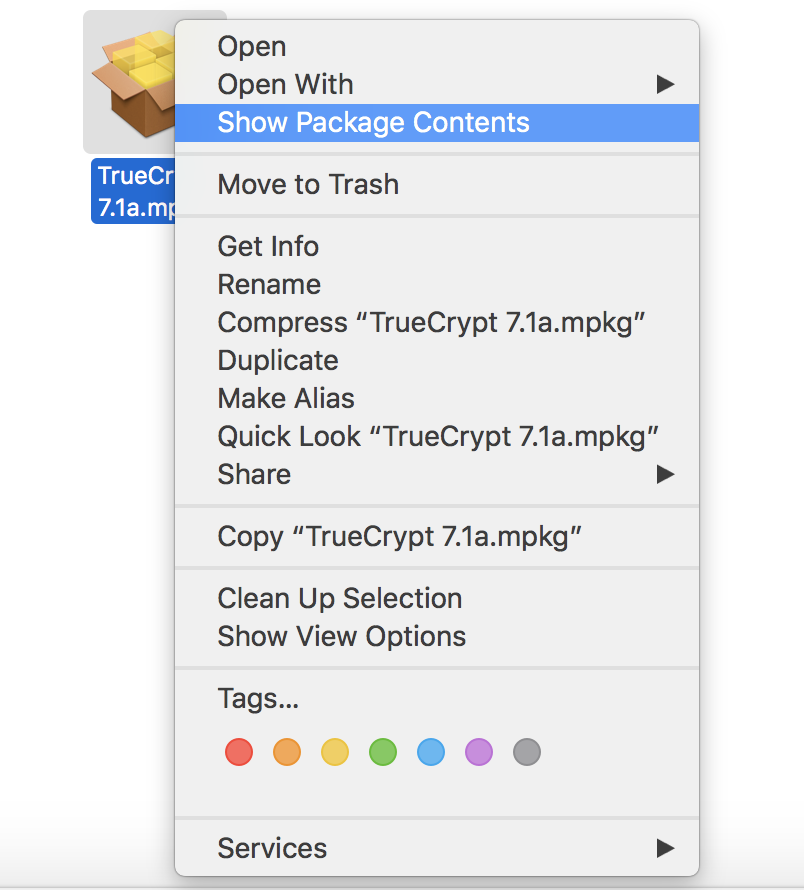
Open the file “distribution.dist” from the folder “Contents” in the text editor TextEdit and delete the lines marked in red below from the code (you will easily find them at the top of the document). After that save the changes and run the file TrueCrypt 7.1a.mpkg. The error won’t bother you again.
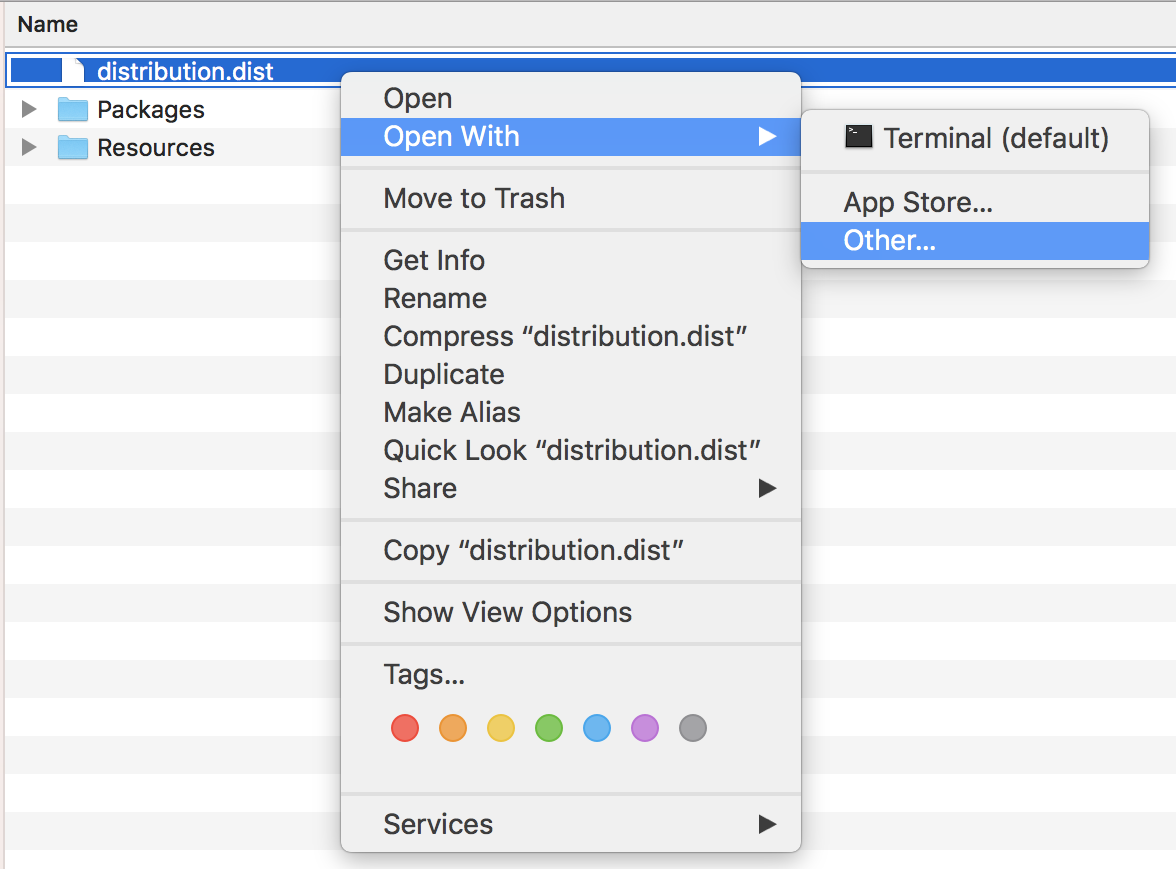
<?xml version="1.0" encoding="utf-8"?>
<installer-script minSpecVersion="1.000000" authoringTool="" authoringToolVersion="" authoringToolBuild="">
<title>TrueCrypt 7.1a</title>
<options customize="allow" allow-external-scripts="no" rootVolumeOnly="true"/>
<installation-check script="pm_install_check();"/>
<script>function IsMacFuseInstallable()
{
return system.sysctl('hw.machine') != 'x86_64' && system.compareVersions(system.version.ProductVersion, '10.7.0') < 0;
}
function pm_install_check() {
if(!(system.version.ProductVersion >= '10.4.0')) {
my.result.title = 'Error';
my.result.message = 'TrueCrypt requires Mac OS X 10.4 or later.';
my.result.type = 'Fatal';
return false;
}
return true;
}
When installing the application, you will probably have to go to the security settings and confirm the installation of TrueCrypt. Apple by default blocks the installation of applications from unidentified developers.
Setting up safe work in TrueCrypt
TrueCrypt protects your data from the prying eyes of third parties, a task it handles perfectly. However, TrueCrypt’s settings by default are geared to make a user’s at the expense of security. Therefore we recommend you to consider your safety and put security first.
First, access the settings window.
Windows
In the menu of the program selectSettings > Preferences.
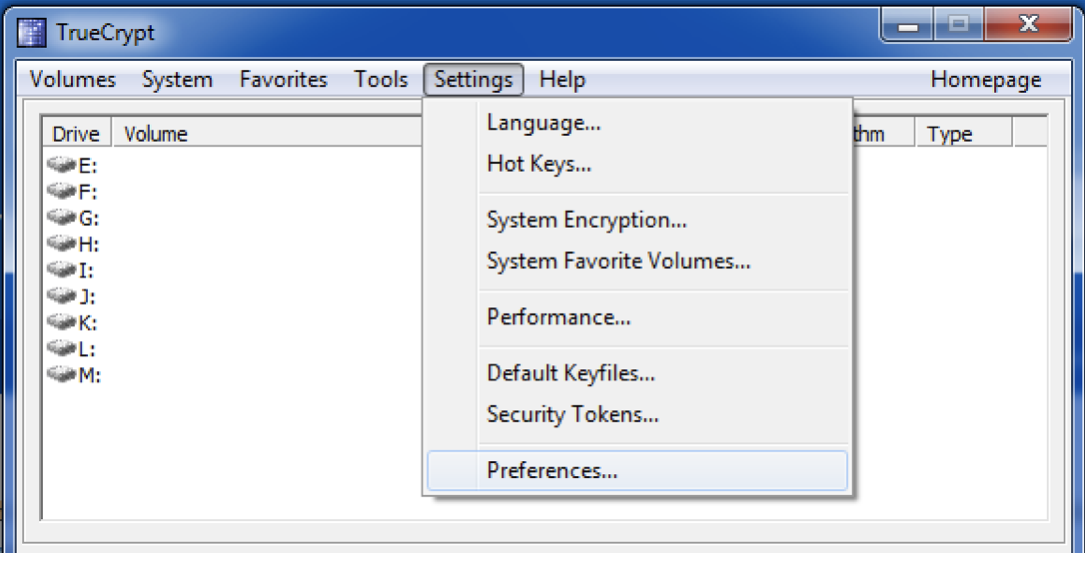
macOS
Settings > Preferences.In the settings select the first tab - Security.

Linux
Settings > Preferences.In the settings select the first tab - Security.
In the window that appears we recommend you to activate two options.
- The first option - Wipe cached password on exit (Windows) / Wipe after TrueCrypt windows has been closed (macOS). Cached passwords while your encrypted file-hosted volume is working are found in RAM which allows you to encrypt and decrypt data “on the fly”. If this option is activated, they will be removed when you exit TrueCrypt.
- The second recommended option - Auto-dismount volume after no data has been read/written to it for 60 minutes. If you select this option, your encrypted file-hosted volumes will be automatically dismounted (disabled) after 60 minutes of idle time.
If your work entails risk and simply can’t let any perpetrators access your encrypted data, we recommend you to reduce the idle time to 2 minutes of inactivity. If malicious intruders break into your home and tied your hands and leave you on the floor with your hands tied, you will still be able to distract them for two minutes.
In two minutes your encrypted volumes will be auto-dismounted to an unrecoverable state. The cached version of the key will be securely removed from RAM. After that even the most advanced forensic software will be helpless against such protective measures.
Important! Make sure that the option Wipe after volume TrueCrypt has been auto-dismounted is activated. It is responsible for deleting the cache key after auto-dismounting an encrypted file-hosted volume.